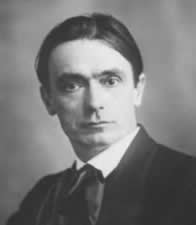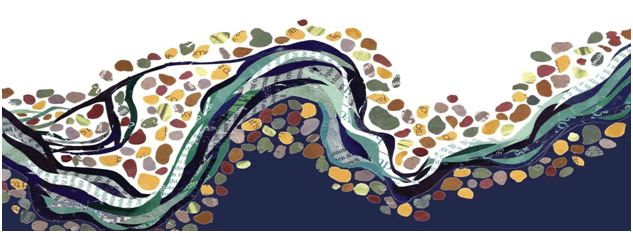
HOME • ASSISTED PUBLISHING • JOIN MAILING LIST
New from Wendy Sarkissian:
A spirited elder recounts her activist journey to confront the terrors of climate change.
In 1990, the Intergovernmental Panel on Climate Change (IPCC) released its first Assessment Report. By then, award-winning urban planner Wendy Sarkissian had been singing the climate blues for years. Her colleagues dismiss her fears, so she abandons urban life for a solitary retreat to reconsider her professional and activist directions. With no bush skills, this terrified novice confronts many challenges during her harsh, year-long adventure in the Australian outback. As weeks pass, however, she discovers wellsprings of courage. Later, she hears her rainforest singing as she rests in a tiny creek. She returns to city life to pursue a doctorate in environmental ethics. With her commitment and energy rekindled, she sings her Creeksong in the service of the Earth.
The healing messages flowing from this spirited elder's soulful memoir will inspire readers from all generations. As we raise our voices to sing our climate blues, we may confront despair, unlock wellsprings of courage, and commit ourselves to the care and protection of our Earth. Inspired by this fervent elder, we may also experience the blessing of healing generational wounds. Learn more at creeksongbook.com and order from:
_____________________________________________________________

Four years in the making, Wendy Sarkissian's ground-breaking ebook on staying connected with a loved one who has died is now available.
In February 2016, Wendy's husband Karl lost control of their car on a slippery rural road in Australia. They plummeted 100 feet into a shallow river where he drowned in front of her. Unable to save Karl and running out of air herself, Wendy escaped by swimming out of their upside-down submerged car.
Wendy, now 77, has spent the past four years healing from her injuries and writing a book about how she learned to communicate with Karl and be comforted and guided by their daily communications. Current psychological research findings support her personal story.
This powerful ebook offers us two amazing gifts. First, it’s a story of enduring love and commitment. It’s also a guide to making and sustaining a connection with a loved one who has died. Dr Sarkissian explains how to contact and communicate with your loved one, using her refinements of approaches developed over a century ago by Rudolf Steiner to open a channel between the living and the dead.
The ebook offers specific methods for recording your communications with your loved one. You will also read about the remarkable content of the 600 messages Karl sent to Wendy. When Wendy analyzed the contents of Karl’s words communicated over 20 months, she found that they were about four main topics: acceptance, gratitude, forgiveness, and service to others (engagement).
This book is different from other books that purport to be channelled from beyond the grave. A community planner with a PhD in professional ethics, Wendy might seem like an odd candidate to receive such communications. But receive them she did, and the outcome is a remarkable story.
What this book makes abundantly clear is that the deep and compassionate love between Wendy and Karl bridged the gap between heaven and Earth and allowed their love story to continue and flourish in new and remarkable ways. Throughout their communication, Karl also demonstrated the power to introduce miracles into Wendy's life, helping her to rebuild it, to heal the broken parts of her relationship with him, and ultimately to find peace and love in a very different new life in another country. This book sparkles with love and compassion. It is bursting with stories about the redemptive power of love and the miracles (Karl calls them "marigolds") that will undoubtedly emerge from a deep connection founded on trust and nourished by love.
PRODUCED IN ASSOCIATION WITH FEARLESS LITERARY,
WHICH REPRESENTS ALL PRINT AND SUBSIDIARY RIGHTS. PUBLISHERS MAY INQUIRE TO info@fearlessbooks.comVIDEO (use password SC2020)
E X C E R P T S
__________________
Chapter 1
Losing Karl
The loneliest wave of loss is the one that carries a loved one away towards death. — John O’Donohue
February 6, 2016
On the Kyogle Road, Uki
New South Wales, Australia
“Too fast!"Oh, God! That white post’s awfully close to the car. Oh, too fast, too fast!
Smash.
Gliding, floating, flying… Thud.
Blackness.
A pulse of electric blue light.
I come to my senses in the cool, dark water of a muddy river eddy, water rising quickly, alarmingly outside the submerged car, rushing through one open window. Late afternoon summer light is slanting in from above.
After seconds that seem like hours, I manage to work out how to locate the buckle and unfasten my seat belt. Now I’m upright in the upside-down car, sitting on the roof with water to my chin. A pocket of air above, the floor above that.
Somehow, I’ve landed in the back of the car, facing my Beloved’s back. My airbag must have thrown me there. He’s in the front, tangled in his seat belt.
***
I remember fragments of my last words to him in the car: “Oh, sweetie, thank you for the beautiful birthday lunch with our friends. Thank you for loving me for the past 23 years. I love you so much, Beloved.”I reach my right hand to pat his knee.
“Thank you. I’m so glad that made you happy. I love you too, Wadie” is his delighted response, as he navigates the tight curves of the narrow, slippery rural road.
***
Now, in the back of the car, I have some air. I am breathing, and my heart is beating. My eyes can see, but only dimly.The front of the car has no air.
After skidding across the road, it has tumbled a hundred feet into the river, landing off-balance on its roof, the front fully submerged.
Karl is sitting up, silhouetted in water as dark as chocolate milk. Once I’m free of my seatbelt, I make several desperate attempts, but I cannot untangle him. His swimming hands gently describe small circles around his body. Maybe he’s reaching for me. Or maybe he’s unconscious, and the current is moving his hands. I reach forward and grasp one circling hand with my left hand.
Then I hear a shocking gurgle of water, like a large sink emptying, as river water fills Karl’s lungs. His head flops to one side. In seconds, he moves from life to lifelessness.
My beloved drowns before me.
Karl breathes his last breath into the river. This sacred river, source of life for so many beings, extinguishes his life.
Karl! Hold your head up!
I never call him Karl. Except in emergencies. Only “My Beloved”. Screaming at my Beloved, only inches from me.
Screaming again: “Karl! Hold your head up!”
Is this it, then? The end of all our dreams? Head to one side, lifeless?
My Romani husband hated water. Our honeymoon was the only time I saw him anywhere near it when we shared a celebratory swim.
“It is in the tradition of Romani people to avoid water,” he’d repeatedly declare, explaining that for centuries, members of authentic Romani communities avoided water as a gesture of freedom from oppressive bourgeois standards....
Chapter 4
The Secrets of Staying Connected
In 2011, following the death of a close friend, a student of Rudolf Steiner for more than 30 years, I sought out Steiner’s writings on connecting with people who had died. In Steiner’s Staying Connected: How to Continue Your Relationships with Those Who Have Died: Selected Talks and Meditations, 1905-1925, I found support for my view (shared by Karl) that a relationship does not need to end with death. Death ends a life, but not a relationship. Following Karl’s death, I had the opportunity to test Steiner’s theories. Deeply grounded in Earth-based spirituality, Karl had a magical quality that he attributed to his Romani origins. He believed in life after death, and we often talked about meeting up in another incarnation. I knew I could reach him. Years earlier, I had studied mediumship and was a competent student. All I needed was a guide and a bit of patience. I was also confident that Karl wanted to reach out to me. In my heart, I knew he would never leave me....
A common air of gratitude
Steiner’s first principle is that we need to enter into a space of the most profound gratitude for the life of that person and the joys and happiness we enjoyed from being in a relationship with them. He recommends paying attention to the sense of gratitude beneath the surface of our consciousness, as the dead will have common ground with us if we affirm that life is a gift. Steiner calls that “a common air of gratitude”.Importantly, we should refrain from expressing our yearning or grief for the loss of that person. We must approach them with scrupulous care and great propriety. Says Steiner, “we must be able to raise ourselves to a feeling of thankfulness that we have had them; we must be able to think selflessly of what they were to us until their death, and not what we feel now when we have them no more.” It is helpful to express universal gratitude for the experiences of life and for every experience, even the smallest, reaffirming a sense of community with the world around us. Embodying a feeling of hopefulness in life, we must communicate universal trust, faith, and confidence in life and humanity. We must remain open to how these qualities present themselves. Our motto must become Life always has something to give us.
Three blessings
Bearing these ideas in mind, I began to include in my morning meditations a brief version of the Three Blessings gratitude exercise, popularized by psychologist Martin Seligman, the founding father of Positive Psychology. This exercise aims to increase happiness and a sense of well-being by transforming our negative thoughts into positive ones. The three blessings I recorded in my journal were pretty basic. At first, I could muster little more than statements of three simple things that had gone well during my day. I was desperate to ensure that my grief would not tie Karl to me or the Earth or in any way impede his passage in the spiritual realms. I remembered Steiner’s cautionary words: “When we lose these people we love, the better we can feel what they were to us during their life, the sooner will it be possible for them to speak to us through the common air of gratitude.”Appreciation
Actions speak louder than words
Steiner’s concept of gratitude included an appreciation of what that person meant and still means to us. He said that only in modern Western materialist cultures do we partition the dead from our consciousness and believe that they have no further interest in our lives. In fact, the dead have a deep interest in human life. They eagerly seek information about the human life they have left and are eager to participate in and influence the lives of those they love and care for. They want to work with us so that we can receive their guidance. They want to help in the evolution of humanity via a reciprocal and caring relationship. To alter our perspective, we need only build a bridge to them.
Steiner explained that the dead can appreciate or understand some aspects of human life more fully than others. Most compelling for them is evidence of our human appreciation of the actions they undertook in their human life. While it is tempting to reiterate the valuable and honorable qualities of our loved one, speaking about actions is likely to yield better results. We need to speak the language of the dead — a language of verbs. For them, everything is related to activity. In Steiner’s view, our thoughts of love and our memories equal artistic creations; they are like art to the dead. He says, “Each time a dead soul encounters a remembrance of itself in the soul of a living human being … it is as if something streams over to that soul that beautifies its life, enhancing its value.”...
 HOME • ASSISTED PUBLISHING • JOIN MAILING LIST
HOME • ASSISTED PUBLISHING • JOIN MAILING LIST
 "Gradually, we come to realize that the so-called dead and indeed the whole spiritual world are involved in and care deeply about every aspect of earthly life. Thereby, we come to understand the supreme importance of earthly life as the only sphere in the universe where death can be experienced. And not only death: earth is above all the place of connection, of relationship and love. Love, connection, relationship occur only on the earth. We had better take care of them. Those fruits we take to heaven."
"Gradually, we come to realize that the so-called dead and indeed the whole spiritual world are involved in and care deeply about every aspect of earthly life. Thereby, we come to understand the supreme importance of earthly life as the only sphere in the universe where death can be experienced. And not only death: earth is above all the place of connection, of relationship and love. Love, connection, relationship occur only on the earth. We had better take care of them. Those fruits we take to heaven." 